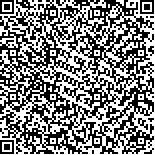| 张 超,罗 希,林立平.先大分割后常规分割放疗联合同期化疗治疗晚期中央型非小细胞肺癌疗效及生物效应剂量探讨[J].肿瘤学杂志,2017,23(8):686-691. |
| 先大分割后常规分割放疗联合同期化疗治疗晚期中央型非小细胞肺癌疗效及生物效应剂量探讨 |
| The Efficacy and Biological Effective Dose of Hypofractionated Followed by Conventional Radiotherapy with Concurrent Chemotherapy for Advanced Centrally Located NSCLC |
| 投稿时间:2016-12-10 |
| DOI:10.11735/j.issn.1671-170X.2017.08.B008 |
|
 |
| 中文关键词: 大分割 常规分割 同期化疗 非小细胞肺癌 疗效 生物效应剂量 |
| 英文关键词:hypofractionated radiotherapy concurrent chemotherapy NSCLC efficacy biological effective dose |
| 基金项目: |
|
| 摘要点击次数: 2762 |
| 全文下载次数: 749 |
| 中文摘要: |
| 摘 要:[目的] 探讨先大分割后常规分割放疗对晚期中央型非小细胞肺癌(NSCLC)疗效,并对生物效应剂量进行分析评估。[方法] 25 例晚期中央型NSCLC 患者,先行大分割适形调强放疗(A组):3~4Gy/次,每日1次,5次 /周,共5~7次(剂量15~28Gy)后改为常规分割,2Gy/次,每日1次,共15~17次(剂量30~34Gy),总疗程4~5周;选取同期25例行常规分割放疗患者(B组):2.00~2.25Gy/次,每日1次,5次 /周,共28~30次(总剂量 56.0~67.5Gy),总疗程 5~6 周。联合同期化疗方案相同,均为每周1次多西他赛25mg/m2。观察治疗后A、B两组肺内病灶疗效,1、2 年局部复发率、生存率以及急性血液学毒性、放射性肺炎、食管黏膜损伤等不良反应,并分别以BED公式法和TDF查表法计算生物有效剂量BED及EQD2来评估效应剂量与脊髓受量情况。[结果]放疗后3个月,A组和B组病灶有效率分别为 80.0%(20/25)和 52.0%(13/25)(P=0.037);1 年局部复发率分别为 48.0%(12/25)和 76.0%(19/25)(P=0.041),2 年局部复发率分别为 72.0%(18/25)和 84.0%(21/25)(P=0.306);1 年生存率分别为 56%(14/25)和 44%(11/25),2 年生存率分别为 24.0%(6/25)和 16.0%(4/25)(P=0.496);两组急性血液学毒性,放射性肺、食管损伤发生率差异均无统计学意义。大分割换算成相当于2Gy/次的计算结果,TDF查表法要大于EQD2值法。 [结论] ①晚期中央型非小细胞肺癌先大分割后常规分割放疗疗效优于常规分割放疗,不良反应无明显增加,有生物学时间剂量效应优势;②重要危及器官如脊髓等的评估,可以将大分割处方剂量以EQD2公式与TDF查表法换算成相当于2Gy/次的计划总剂量后,采取两种算法换算所测得Dmax进行综合评估。 |
| 英文摘要: |
| Abstract:[Objective] To investigate the efficacy of hypofractionated followed by conventional radiotherapy with concurrent chemotherapy for advanced centrally located NSCLC,and to evaluate the biological effective dose(BED). . [Methods] Twenty-five cases with advanced centrally located NSCLC received a hypofractionated IMRT regimen of 3~4Gy per fraction,1 time a day,five times per week,to a total of 5 to 7 times(dose of 15 to 28Gy),followed by a conventional IMRT of 2Gy per fraction,1 time a day to a total of 15 to 17 times(dose 30~34 Gy),the overall treatment time of 4~5 weeks(group A);Meanwhile 25 patients underwent conventional radiotherapy of 2~2.25Gy per fraction,1 time a day,five times per week,with a total of 28 and 30 times to a total dose of 56~67.5Gy,the overall treatment time of 5~6 weeks(group B). The chemotherapy regimen was Docetaxel of 25 mg/m2 each week during radiotherapy for both groups. Then to observe the local control 3 months after treatment,1,2 years local recurrence rate,and 1,2 years survival rate,as well as adverse reactions such as acute hematologic toxicity,radiation-pneumonia,esophagitis,etc. Accordingly BED model and TDF model were used to calculate the BED and EQD2 to evaluate the effect of treatment and spinal injury risks. [Results]Three months after radiotherapy,the local control rate of group A and group B were 80.0%(20/25) and 52.0%(13/25)respectively(P=0.037);1-year local recurrence rate was 48.0%(12/25) in group A and 76.0%(19/25) in group B(P=0.041),2-year local recurrence rate was 72.0%(18/25) and 84.0%(21/25) respectively(P=0.306);1-year survival rate was 56%(14/25)and 44%(11/25),2-year survival rate was 24%(6/25) and 16%(4/25)respectively(P=0.496).The acute hematologic toxicity,radiation-pneumonia,esophagitis were not statistically significant between groups. BED value was higher calculated by TDF model than by EQD2 model. [Conclusion] (1) The efficacy of advanced centrally located NSCLC treated with IMRT of hypofraction regimen followed by a conventional radiation was superior to a regimen of conventional radiotherapy,with no increasement in adverse reactions,with an advantage in biological time-dose effect.(2)It’s applicable to convert the dose of hypofraction into a dose of 2Gy per fraction with EQD2 model and TDF model respectively,in order to have a comprehensive assessment about the safety of organs at risk(OAR) e.g. spinal cord by its Dmax value. |
|
在线阅读
查看全文 查看/发表评论 下载PDF阅读器 |